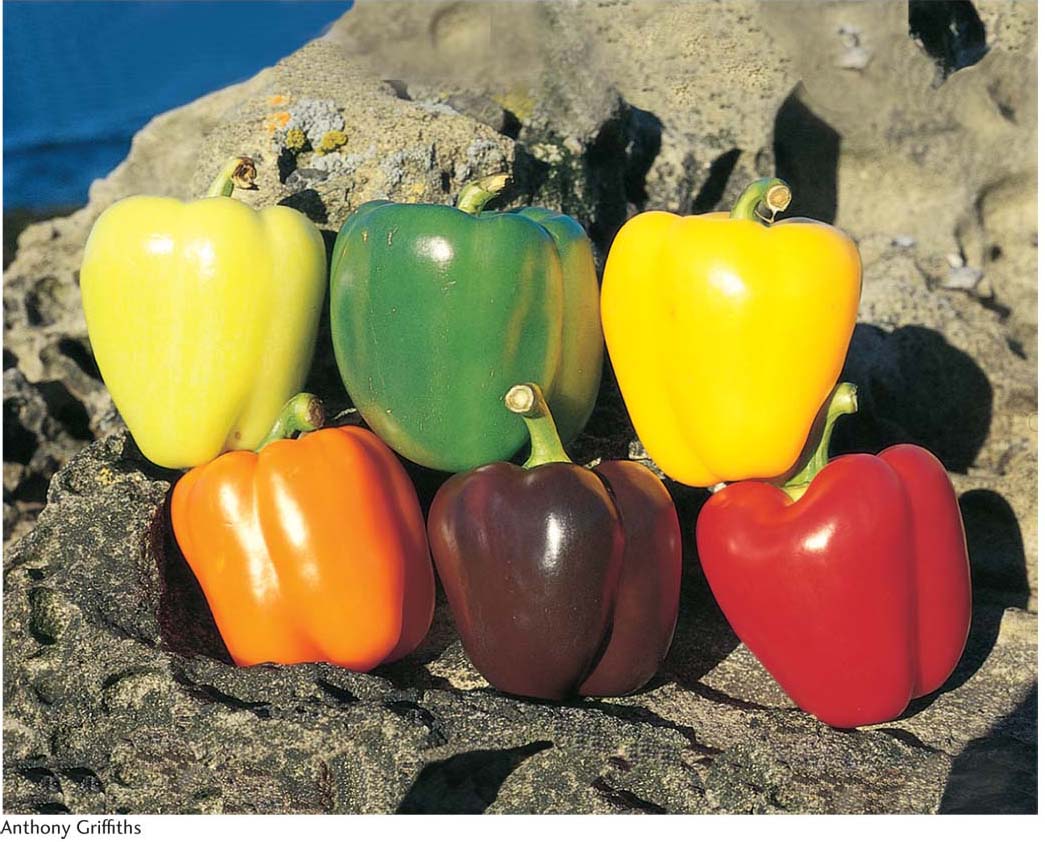Chapter Introduction
Gene Interaction
215
Gene Interaction
CHAPTER
6
LEARNING OUTCOMES
After completing this chapter, you will be able to
Design experiments to test two or more mutations for allelism, using progeny ratios or using complementation tests.
Infer various types of dominance based on the phenotypes of heterozygotes.
Recognize the diagnostics for the presence of a lethal allele.
Infer interaction of different genes, based on modified Mendelian ratios.
Formulate reasonable molecular hypotheses to explain various types of gene interaction.
Recognize the diagnostics for variations in penetrance and expressivity of genotypes.
Predict progeny of crosses in which genes show one or more of the above types of interaction.

OUTLINE
|
6.1 |
Interactions between the alleles of a single gene: variations on dominance |
|
6.2 |
Interaction of genes in pathways |
|
6.3 |
Inferring gene interactions |
|
6.4 |
Penetrance and expressivity |
216
The thrust of our presentation in the book so far has been to show how geneticists identify a gene that affects some biological property of interest. We have seen how the approaches of forward genetics can be used to identify individual genes. The researcher begins with a set of mutants, and then crosses each mutant with the wild type to see if the mutant shows single-
How are the gene interactions underlying a property deduced? One molecular approach is to analyze protein interactions directly in vitro by using one protein as “bait” and observing which other cellular proteins attach to it. Proteins that are found to bind to the bait are candidates for interaction in the living cell. Another molecular approach is to analyze mRNA transcripts. The genes that collaborate in some specific developmental process can be defined by the set of RNA transcripts present when that process is going on, a type of analysis now carried out with the use of genome chips (see Chapter 14). Finally, gene interactions and their significance in shaping phenotype can be deduced by genetic analysis, which is the focus of this chapter.
Gene interactions can be classified broadly into two categories. The first category consists of interactions between alleles of one locus, broadly speaking variations on dominance. In earlier chapters, we dealt with full dominance and full recessiveness, but as we shall see in this chapter, there are other types of dominance, each with their own underlying cell biology. Although this information does not address the range of genes affecting a function, a great deal can be learned of a gene’s role by considering allelic interactions. The second category consists of interactions between two or more loci. These interactions reveal the number and types of genes in the overall program underlying a particular biological function.